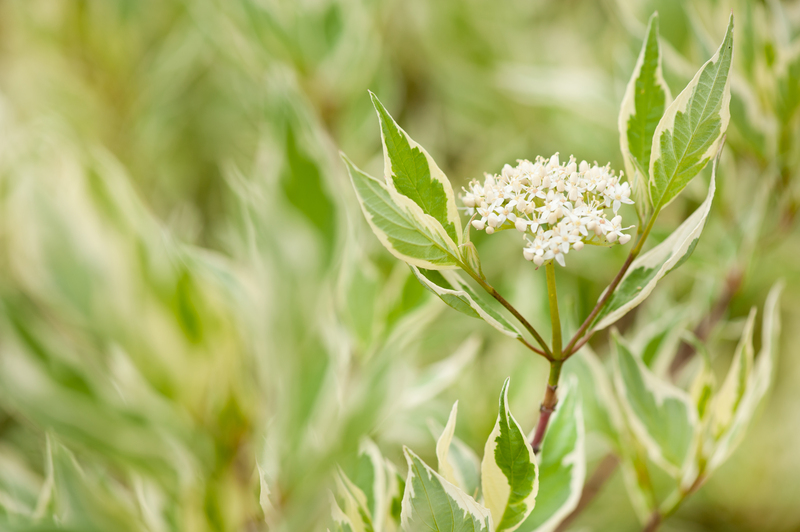Beginner's Guide to Creating a Beautiful Herb Patch
Posted on 22/08/2025
Beginner's Guide to Creating a Beautiful Herb Patch
Have you ever dreamed of snipping fresh basil for your pasta or mint for your mojito, right from your own garden? Establishing a beautiful herb patch is one of the most rewarding gardening projects for beginners. It's affordable, doesn't require much space, and delivers aromatic herbs you can use every day. Whether you have a sprawling yard or a small balcony, this comprehensive guide will teach you how to start an herb garden from scratch and turn it into a lush, vibrant patch bursting with flavor and beauty.

Why Create an Herb Garden?
- Freshness & Flavor: Homegrown herbs are fresher and tastier than store-bought.
- Cost-Effective: Growing your own herbs saves money in the long run.
- Ease of Growth: Most herbs are simple to cultivate, thriving with minimal care.
- Aesthetic Appeal: An herb patch is attractive, adding texture and fragrance to your garden.
- Pollinator Friendly: Many herbs attract bees, butterflies, and beneficial insects.
- Health Benefits: Fresh herbs are nutritious, flavorful, and often used for their medicinal qualities.
Planning Your Herb Patch
Choosing the Best Location
The location of your herb patch is critical to its success. Most culinary herbs like basil, rosemary, oregano, thyme, and parsley adore sunlight.
- Sunlight: Select a spot that receives at least 6-8 hours of direct sunlight daily.
- Soil: Herbs prefer well-draining, loose, fertile soil rich in organic matter.
- Accessibility: Keep your patch close to the kitchen door or near a path for easy harvesting.
- Protection: Consider wind exposure; some herbs will appreciate a little shelter from strong gusts.
Designing Your Herb Garden
Before you buy plants, sketch your design. Consider these ideas for a visually appealing and easy-to-manage herb patch layout:
- Raised Beds: Ideal for improved drainage and easy access; they also help keep soil warmer in cooler climates.
- Container Gardens: Perfect for balconies, patios, or renters.
- Herb Spiral: A spiral mound made of rocks or bricks, maximizing space and microclimates for different herbs.
- Traditional Rows or Grid: Simple and effective for beginners learning the ropes.
Selecting the Right Herbs for Beginners
Not all herbs are created equal in terms of care and climate tolerance. Start with easy-to-grow varieties that match your region and cooking preferences.
Best Herbs for a Beginner's Patch
- Basil: Sweet, aromatic, and a favorite for Italian dishes. Thrives in warm weather.
- Mint: Perfect for teas, desserts, and cocktails. Hardy and quick-spreading - grow it in a pot to control its spread!
- Parsley: Biennial (lasts two years); mild and nutritious.
- Rosemary: Woody, robust, and drought-tolerant once established.
- Thyme: Very low-maintenance, excellent groundcover.
- Chives: Compact, snip as needed for salads and garnishes.
- Cilantro (Coriander): A must for Mexican and Asian cuisines.
- Oregano: Mediterranean herb, essential for pizzas and pasta sauces.
Consider Your Climate
- Warm regions: Basil, rosemary, oregano, thyme, and sage thrive best.
- Cooler areas: Parsley, chives, mint, and some thymes are ideal.
Check your USDA Hardiness Zone or country-specific planting guides for more details on what herbs perform best in your area.
Preparing the Soil for Your Herb Patch
Soil Quality & Preparation
- Test the Soil: Use a simple soil test kit to check pH (ideal is 6-7).
- Add Organic Matter: Incorporate compost or well-rotted manure into the soil to improve structure and fertility.
- Improve Drainage: If your soil is clay-heavy, mix in coarse sand or create raised beds.
- Remove Weeds: Pull out all weeds and debris before planting.
Mulching Your Herb Patch
Lay a thin layer of mulch (such as straw, leaf mold, or bark chips) after planting. Mulch helps regulate soil temperature, retain moisture, and suppress weeds.
Planting Your Herb Garden
Seeds vs. Seedlings
- Seeds: Cost-effective and offer a fun gardening experience but require patience and careful watering.
- Seedlings: Faster to establish and yield faster harvests; ideal for impatient beginners.
Follow packet instructions for depth and spacing. Most herbs benefit from gentle, regular watering after sowing.
Tips for Successful Planting
- Plant in Groups: Cluster herbs with similar water/light needs together.
- Space Properly: Give each plant enough room. Overcrowding reduces airflow and invites disease.
- Water Deeply: After planting, water thoroughly to settle roots and remove air pockets.
Caring for Your Herb Patch
Watering Tips
- Consistent Moisture: Most herbs like soil kept evenly moist but not soggy.
- Check Before Watering: Insert a finger an inch deep--if dry, it's time to water.
- Water at the Base: Avoid wetting leaves excessively; water early in the day to prevent mildew.
Fertilizing
- Go Easy: Herbs rarely need heavy feeding. Over-fertilizing lessens flavor intensity.
- Apply a light compost tea or organic general-purpose fertilizer once a month in active growth.
Pruning and Harvesting
- Harvest Regularly: Snipping tips encourages bushier growth and better yields.
- Don't Strip Bare: Harvest no more than one-third of a plant at a time.
- Deadhead Flowers: Pinch off flower buds on leafy herbs (e.g., basil) to prolong harvest.
Pest and Disease Management
- Healthy Plants = Fewer Problems: Don't overcrowd and maintain good airflow.
- Handpick Visible Pests: Aphids and caterpillars can be picked off by hand.
- Natural Remedies: Spray with diluted soapy water or neem oil if problems persist.
- Avoid Chemicals: Since you'll eat these herbs, prefer organic solutions.
Design Tips for a Beautiful Herb Patch
Mixing Colors, Heights, and Textures
- Layer Tall and Short: Place tallest herbs (e.g., fennel, rosemary) at the back or center, lower growers (like thyme or oregano) at the edges.
- Use Edible Flowers: Include flowers like calendula or nasturtium for pops of color and pollinator appeal.
- Vary Foliage: Contrasting leaf shapes (round basil, needle-leaved rosemary, feathery dill) add interest.
Incorporating Hardscape and Decorative Elements
- Pathways: Gravel or stepping stones make neat, accessible paths.
- Label Plants: Use rustic signs or painted stones for plant names--fun and functional!
- Vertical Gardening: Try wall-mounted pots or vertical pallet planters for small spaces.
Seasonal Maintenance of Your Herb Patch
Spring
- Plant New Herbs: This is the main growing season for most herbs.
- Feed Compost: A light application of compost jump-starts the season.
- Divide Perennials: Split mint, chives, or oregano to prevent overcrowding and expand your herb patch.
Summer
- Water Consistently: Monitor for drought stress in warm weather.
- Pinch Back Growth: Prevents herbs from bolting and going to seed too early.
- Watch for Pests: Aphids, slugs, and snails are most active now.
Autumn
- Final Harvest: Pick what you can before the weather cools.
- Dry or Freeze Herbs: Preserve the summer's bounty for winter use.
- Mulch Perennials: Add a thick layer of mulch to protect roots over winter.
Winter
- Pot up Herbs: Bring Mediterranean herbs like rosemary or basil indoors to a sunny windowsill.
- Prune Dead Growth: Trim down perennials but leave enough to protect plant crowns from frost.
- Plan Next Year's Patch: Reflect on successes and envision new additions!
Harvesting and Using Your Homegrown Herbs
The best part of having a thriving herb patch is enjoying the delicious, fresh flavors in your cooking and wellness routines. Here's how to make the most of your harvest:
- Basil: Great for pesto, salads, and tomato dishes.
- Mint: Add to drinks, desserts, or tabbouleh.
- Rosemary: Infuse roasts, breads, and soups.
- Chives: Sprinkle over eggs, potatoes, and dips.
- Thyme: Works well in stews, stocks, and sauces.
- Parsley: Use as a garnish or base for chimichurri.
- Oregano: Flavor pizzas, Mediterranean dishes, and marinades.
Pro Tip: Harvest herbs in the early morning after the dew dries but before the sun gets too hot--this is when their essential oils (and flavors) are at their peak.
Preserving Herbs for Year-Round Use
- Drying: Tie small bunches upside down in a warm, airy place or use a dehydrator.
- Freezing: Chop herbs and freeze in ice cube trays with water or olive oil.
- Herb Butters: Blend chopped herbs into softened butter and refrigerate or freeze.
- Vinegars & Oils: Infuse for delicious salad dressings or marinades.

Common Beginner Questions About Herb Patches
-
Q: Can I grow herbs indoors?
A: Absolutely! Many herbs (basil, chives, mint, parsley) do well on a sunny windowsill or under grow lights. -
Q: How often should I water my herb patch?
A: Generally, water when the soil feels dry an inch below the surface. Mediterranean herbs tolerate some dryness; others prefer consistently moist soil. -
Q: Should I fertilize my herbs?
A: Light, occasional feeding is all that's needed--herbs grown for leaves have the best flavor when not over-fertilized. -
Q: Why are my herbs getting leggy or sparse?
A: Usually, this means they need more sunlight or regular pinching back to promote bushier growth.
Conclusion: Your Path to a Gorgeous Herb Garden
Creating an herb patch for beginners is an accessible, fulfilling project that rewards you with both a beautiful garden feature and delicious, homegrown herbs. From the sunny selection of your plot and choosing the right tools, to the joy of snipping fresh leaves for your next meal, every step brings you closer to nature and self-sufficiency. Start simple, embrace experimentation, and soon, your very own herb garden will be a source of pride--and spectacular flavor--in your home.
Remember, gardening is about learning and enjoyment, not perfection. Keep nourishing your patch, and it will, in turn, nourish you for years to come. Happy herb gardening!

